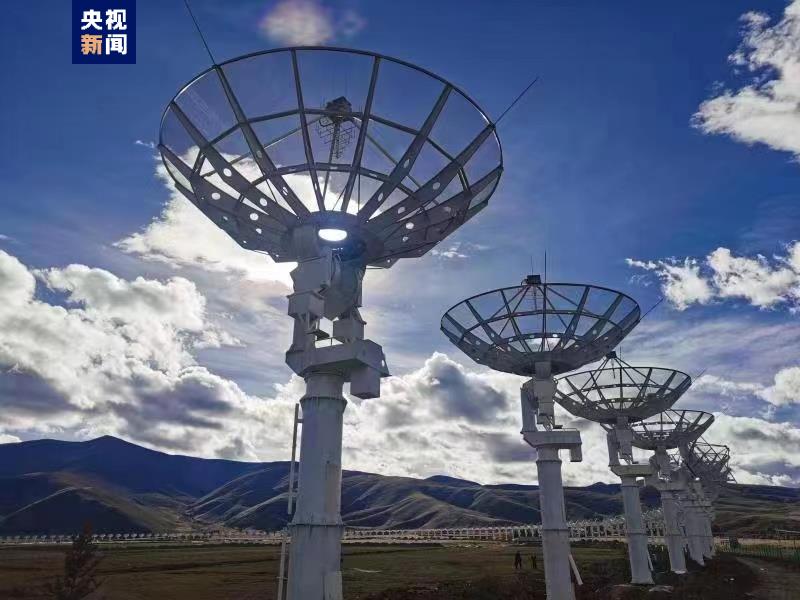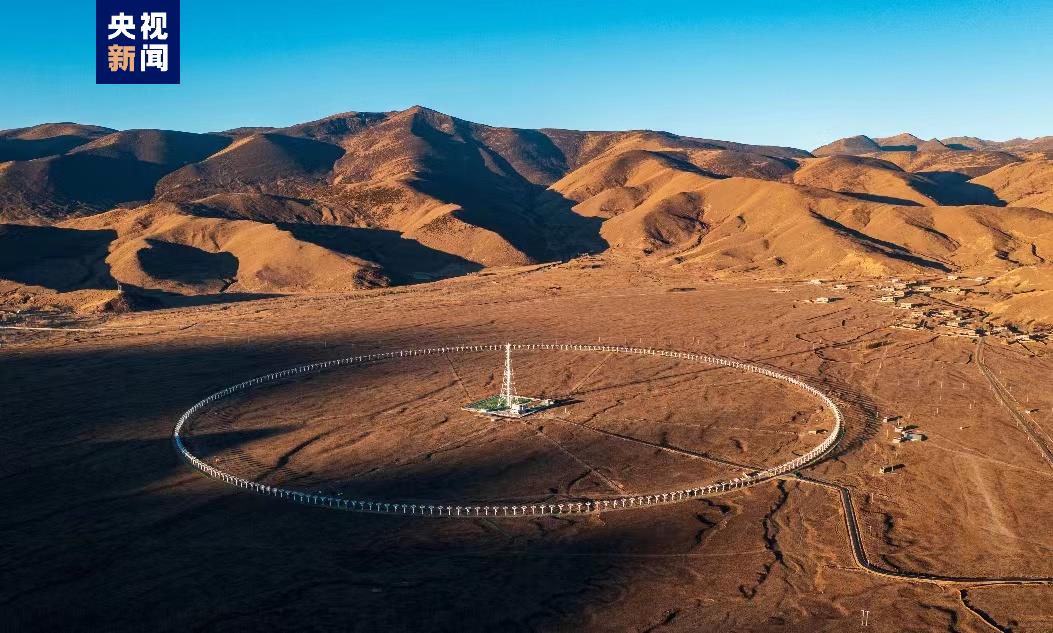
The Daocheng Solar Radio Telescope. /China Media Group
The Daocheng Solar Radio Telescope. /China Media Group
China's Daocheng Solar Radio Telescope (DSRT), a solar telescope array in southwest China's Sichuan Province, passed key testing on Wednesday, marking the completion of the world's largest synthesis aperture radio telescope, according to the Chinese Academy of Sciences (CAS).
The telescope array is a landmark equipment of the country's space environment ground-base comprehensive monitoring network – part of the country's phase-2 Meridian Project. It will provide high-quality observation data for solar physics and space weather research in China, CAS said.
Located in an open area at an altitude of 3,820 meters in Daocheng County, the telescope array consists of 313 parabolic antennas with a diameter of 6 meters, forming a large ring with a diameter of 1 kilometer.
Covering an area of about 1 square kilometer, the array looks like a string of pearls lying flat on the plateau.

The Daocheng Solar Radio Telescope consists of 313 parabolic antennas, forming a large ring with a diameter of 1 kilometer. /China Media Group
The Daocheng Solar Radio Telescope consists of 313 parabolic antennas, forming a large ring with a diameter of 1 kilometer. /China Media Group
The testing showed that the telescope array had achieved continuous and stable solar radio imaging and spectrum observation capabilities with a maximum field of view of ten solar radii, and all technical indicators met or exceeded design requirements.
A solar radius is a unit of distance in astronomy equal to the current radius of the sun, approximately 695,500 kilometers.
"When the sun sneezes, Earth may catch a cold," said Yan Jingye, director of the project at CAS.
He noted that the changes in the space environment caused by solar activities on a short-term scale are referred to as space weather. High-quality monitoring and prediction of space weather are of great significance for the smooth operation of high-tech systems such as space projects and satellite communication.
According to Yan, the telescope array can monitor various solar eruptions and the process of solar storms entering interstellar space, which helps to predict and assess the impact of solar activity on Earth by understanding the mechanism of solar eruptions and the laws of solar storm propagation from the sun to Earth.
The telescope array has started to acquire solar imaging data since March 2022 and has accumulated a large number of solar activity images and spectrum data.
In March this year, when it was still under system debugging, the telescope array successfully identified the pulsar flicker in its first pulsar detection experiment based on radio image sequence.
It conducted a joint observation experiment with Europe's Low Frequency Array in May and started trial operation in July after its observation capabilities were verified.

The parabolic antennas of the Daocheng Solar Radio Telescope. /China Media Group
The parabolic antennas of the Daocheng Solar Radio Telescope. /China Media Group
Next, the telescope array is expected to monitor solar activities during daytime. It will also conduct joint observations with other major national scientific and technological infrastructure, including the Five-hundred-meter Aperture Spherical Telescope (FAST), known as China Sky Eye in Guizhou Province, China's deep-space observation radar facility dubbed China Compound Eye in Chongqing Municipality, and Sanya Incoherent Scatter Radar in Hainan Province.

An aerial view of the Daocheng Solar Radio Telescope. /China Media Group
An aerial view of the Daocheng Solar Radio Telescope. /China Media Group
China launched the Meridian Project in 2008, a monitoring network comprising 31 ground-based stations, to investigate the weather in space and understand the processes behind these catastrophic events.
(With input from Xinhua)